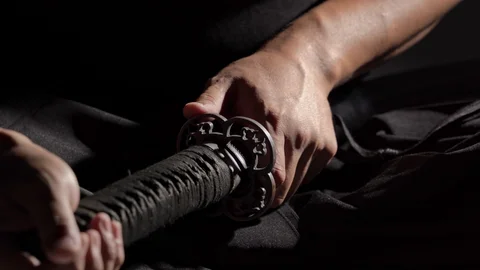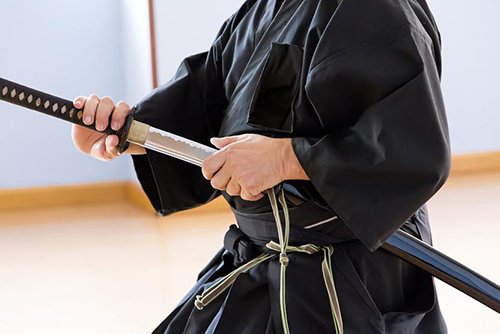The katana sword is more than a weapon; it is a piece of living history, a symbol of cultural heritage forged from fire and steel. For centuries, this revered Japanese sword has captivated collectors, martial arts enthusiasts, and history buffs alike. Its elegant curve, formidable cutting edge, and rich narrative make it one of the most iconic blades in the world.
For those drawn to the world of katana samurai sword , starting a collection can feel like a monumental task. The market is vast, and distinguishing a genuine piece of artistry from a mere replica requires a trained eye. This guide is designed to illuminate the path for aspiring collectors. We will explore the essential qualities of a high-quality katana, recommend specific models, and provide practical advice on purchasing and maintaining your prized possession. Prepare to embark on a journey into the heart of samurai tradition.
What Makes a Quality Katana?
The genuine appearance of a katana sword comes from a combination of properly forged steel, a visible hamon (temper line), a full tang construction, and high-quality fittings. Understanding these elements is the first step toward building a respectable collection.
Steel Type and Forging
The soul of a katana lies in its steel. Traditionally, these swords were made from tamahagane, a type of steel produced in a Japanese clay furnace called a tatara. Today, high-quality katanas are typically forged from high carbon steel, such as 1060, 1095, or T10 tool steel.
- 1060 High Carbon Steel:A great choice for durability, it holds an edge well and is resistant to chipping, making it suitable for practice cutting (tameshigiri).
- 1095 High Carbon Steel:This steel has a higher carbon content, allowing for a very sharp edge and a more prominent and beautiful hamon. It is harder but slightly more brittle than 1060 steel.
- T10 Tool Steel:Known for its toughness and edge retention, T10 is a modern favorite. It often contains tungsten, which enhances its hardness and makes it incredibly durable.
The forging process itself is an art form. A handmade katana can take weeks or even months to complete. The process involves multiple folding operations to purify the steel, followed by a differential heat treatment that creates the hard edge and softer spine, resulting in the distinct hamon line.
Balance, Handling, and Craftsmanship
A well-made katana should feel like an extension of your arm. The balance point, or sori, is typically a few inches from the tsuba (handguard), allowing for swift and controlled movements. The full tang (nakago) construction ensures the blade is securely anchored within the handle (tsuka), providing stability and strength.
Examine the blade’s geometry closely. The lines should be crisp, the surfaces smooth, and the polish even. The fittings, including the tsuba, fuchi (collar), and kashira (pommel), should be well-fitted and made from quality materials.
The Aesthetics of the Blade
The beauty of a katana is in its details.
- Hamon:The temper line is the visual result of the differential hardening process. Each hamon is unique, with patterns like waves (notare), straight lines (suguha), or irregular formations (midare). A genuine, well-executed hamon is a sign of masterful craftsmanship.
- Fittings (Koshirae):The mountings of the sword contribute significantly to its overall character. The tsuka-ito (handle wrap) should be tight and even. The saya (scabbard) should fit the blade perfectly, protecting it from the elements. Materials can range from simple iron to ornate alloys decorated with gold and silver.
Top Katana Recommendations for Collectors

When starting your collection, it’s wise to focus on reputable brands known for their commitment to quality and tradition. Here are a few recommendations, including our own esteemed Makoto swords.
Makoto Katanas
Makoto swords are crafted with precision and a deep respect for Japanese tradition. They embody the spirit of authenticity and are designed for both martial artists and discerning collectors.
- Pros:
- Authentic Craftsmanship:Makoto katanas are forged using traditional methods and high-quality materials like T10 steel, ensuring a sharp, durable blade.
- Aesthetic Detail:Each Makoto katana features a distinct and beautiful hamon, meticulously crafted fittings, and a perfectly balanced feel.
- Versatility:Suitable for both display and light cutting practice, they offer a blend of beauty and function.
- Cons:
- Investment:As premium blades, they represent a significant investment compared to entry-level swords.
A Makoto katana is not just a sword; it is a piece of art that carries the legacy of the samurai.
Hanwei (Paul Chen)
Hanwei has a long-standing reputation for producing a wide range of Japanese swords, from practical entry-level models to high-end artistic pieces.
- Pros:
- Variety:They offer a vast selection catering to different budgets and purposes.
- Reliability:Known for consistent quality and durability, especially in their performance series.
- Cons:
- Inconsistency:Some lower-end models may lack the fine details of their more expensive counterparts.
Ronin Katana
Ronin Katana is popular among practitioners of tameshigiri for their incredibly durable “dojo pro” models.
- Pros:
- Toughness:Their blades are famously tough and designed to withstand heavy cutting.
- Affordability:They offer excellent value for their performance-oriented swords.
- Cons:
- Aesthetics:The focus is more on function than intricate aesthetic details, so the fittings and polish may be simpler.
Where to Buy Authentic Katana Swords
Purchasing a samurai sword requires trust and due diligence. It’s essential to buy from reputable vendors to ensure you receive a quality, authentic blade.
- Specialized Online Retailers:Websites dedicated to Japanese swords are often the best place to start. Look for retailers that provide detailed specifications, clear photographs, and background information on their products. Reputable sites often feature customer reviews and have a clear return policy.
- Direct from Forges/Brands:Buying directly from a brand like Makoto swords ensures authenticity and gives you access to their full range of products, including customization options like engravings.
- Sword Shows and Expos:These events allow you to handle swords in person and speak directly with makers and vendors. This hands-on experience is invaluable for understanding the feel and balance of a blade.
When buying, always verify the steel type, forging method, and tang construction. Ask for detailed photos of the hamon, fittings, and blade geometry. A trustworthy seller will be transparent and happy to provide this information.
Maintenance and Care for Your Katana
A katana is a piece of high carbon steel and requires regular care to prevent rust and preserve its beauty.
- Cleaning:After handling, wipe the blade with a soft, clean cloth to remove fingerprints and oils. Use a specialized sword cleaning kit, which typically includes rice paper (nuguigami), a powder ball (uchiko), and sword oil (choji oil).
- Oiling:Apply a thin, even layer of choji oil along the length of the blade. This creates a protective barrier against moisture. Re-oil your sword every few months, or more frequently if you live in a humid climate.
- Storage:Store your katana horizontally with the cutting edge facing up inside its saya. This prevents the blade from resting on its edge and protects the inside of the scabbard. Keep it in a dry, climate-controlled environment away from direct sunlight.
A Legacy of Steel and Spirit
Collecting katana swords is a journey into a world of artistry, history, and martial tradition. Each blade tells a story of the craftsman’s skill and the warrior’s spirit. By understanding the qualities of a fine sword, choosing reputable sources, and committing to proper care, you can build a collection that is not only visually stunning but also rich in cultural significance.
Ready to begin your journey? Explore our collection of masterfully crafted Makoto katanas and find the perfect sword to start or enhance your collection.

